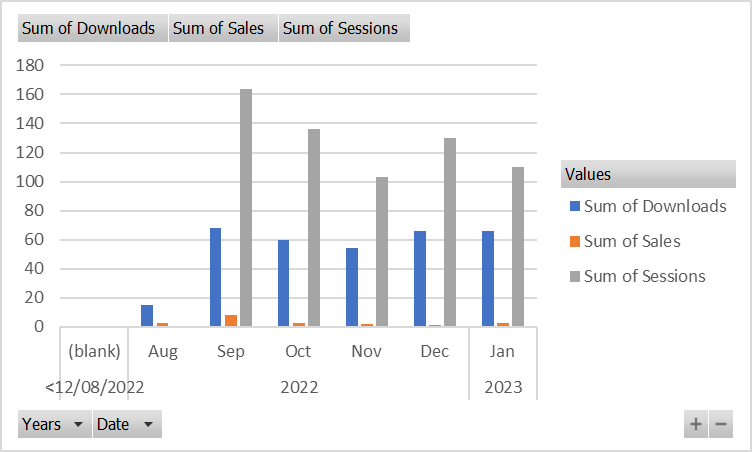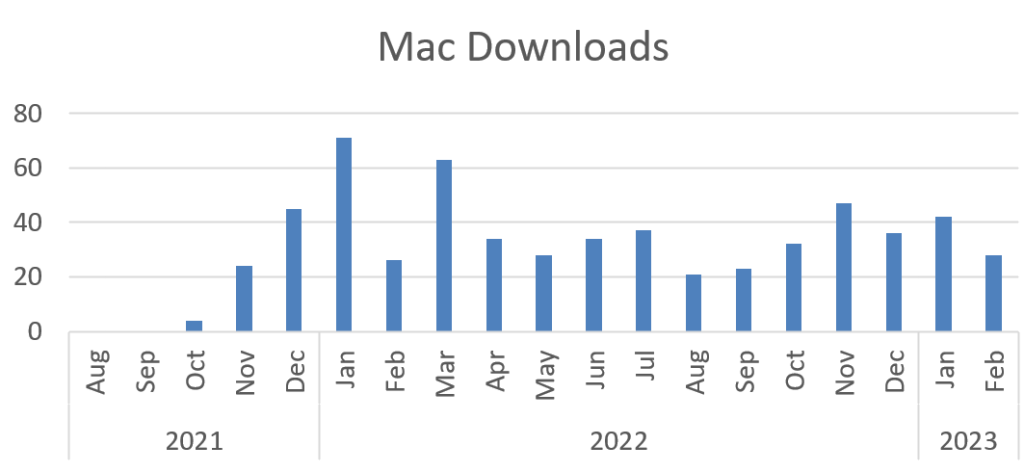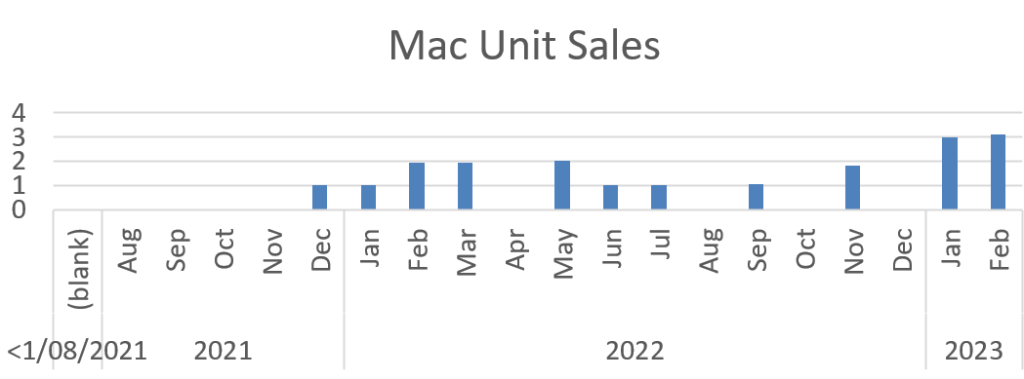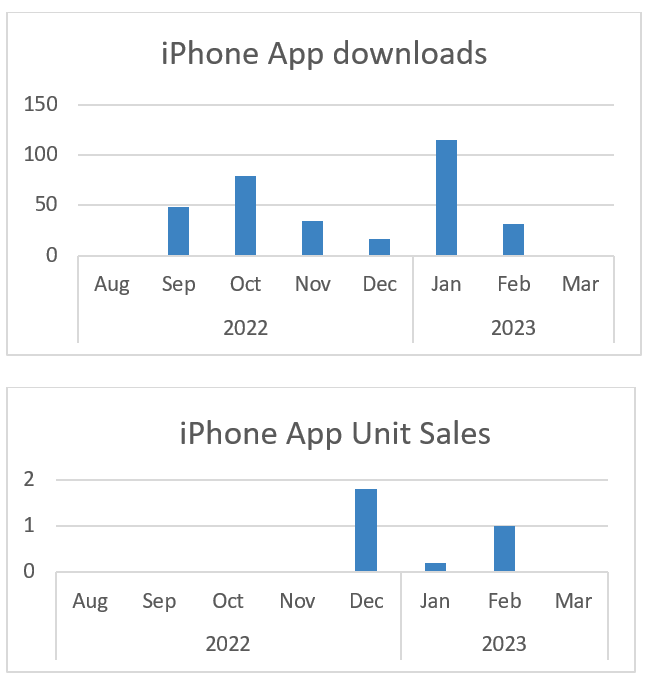 In this guest post Christoph Engelhardt talks about why link building is an important part of online marketing and the most effective ways to do it.
In this guest post Christoph Engelhardt talks about why link building is an important part of online marketing and the most effective ways to do it.
When you are promoting your product online, there is a myriad of different ways to do it: Display Ads, Google Adwords, Facebook Ads, Social Media, Email Marketing, Online PR, and SEO – to just name a few.
Deciding on the right method for your business can be tricky. They are all so different. Some of those methods can be turned on and off like a faucet; others are more like a flywheel that need a lot of pushing to get going, but will keep delivering results after you’ve stopped.
Hopefully you’re in it for the long haul, so I’m going to talk about a strategy that is more of a flywheel: link building. Building links on the internet is a long-term strategy that factors into multiple traction channels.
Inside this article you will learn:
- How to supercharge your PR, SEO, and Content Marketing with outreach marketing.
- How you can get more links to your website without angering the Google gods.
- At least 3 different ways to find high-quality outreach and link building opportunities.
- The secret to drafting the perfect outreach email.
I’ve been in online business for more than a decade now. I’ve been struggling with moonlighting multiple products to profitability, online marketing and SEO long enough to call myself “somewhat of an expert” on those topics. ;-)
I want to share with you what I have learned in those years to help you avoid making the same mistakes I made.
Let’s get started.
On the ethics of SEO and link building
SEO and link building in particular are often seen as scammy online marketing tactics and I won’t deny that there is some merit to that argument. SEO for the first 10 years has been a lot like the Wild West – minus the random killings. There was no one to effectively enforce the “law of the land” and spammers thrived.
Yes, you could cheat your way to the top of Google’s search results in the past. BUT, it is getting harder and harder with every passing day. Getting to #1 on Google today means you have to “dot the i’s and cross the t’s” in technical SEO (more on what this is later) and get some buzz going for your product – i.e. build some links.
“Link building” as a term is loathed by white-hat SEOs, as it implies spamming comment sections on random blogs and free web directories. They would much rather talk about “earning links” through “Content Marketing” and “Social Amplification”. That’s fine by me, but make no mistake: Having a rich and diverse link profile for your website is still THE major ranking factor for Google’s search results.
Spreading your links around the world wide web isn’t a problem per se. Links are what make the world wide web a WEB in the first place. But the way you do it makes all the difference: If you’re leaving useless comments on unrelated blogs, you’ll do more harm than good. If you get your product reviewed (without paying for it) on a major website where your target audience hangs out, the value gained can hardly be put into words.
Fundamentally, whenever you do any sort of online marketing you are building links. Sharing your content on social media? You’re sharing a link back to your content, because you want people to click that link. Buying Adwords? You’re buying links right on Google’s website. Sharing your news release in a PR campaign? You’re spreading your links.
This means that, if you have a website, you’ve probably started building links without thinking too much about it. All you need to do is be more intentional and active in your efforts.
Why you should include outreach marketing in your marketing mix
Building links helps you in two distinct ways: a) you’re getting referral traffic directly via the links you get, b) the links you get improve your rankings in the search engines, bringing you additional organic SEO traffic.
In the long term, the SEO benefits will often have a greater effect on your traffic than the referral traffic you receive through the links. This is because a great link profile will lift your website to the top of Google across 100’s or 1000’s of keywords (all other things being equal)! That is why link building is related to SEO in most people’s minds. Traditionally it was done almost exclusively to get that sweet #1 spot on Google.
However, you should not neglect the sheer amount of traffic you can get from a well-placed link. Depending on where you get that link from (and we will talk about this in a minute) a single link can send you 1000’s of visitors.
In fact, I advise everyone to completely neglect the SEO benefits when they think about where to get a link from. When you try to get a link from another website, here are the questions you should ask yourself:
- Is this a trusted website in your niche?
- Does that website have a big enough audience to send you meaningful traffic?
- Is that website’s audience interested in your product at all?
You don’t want to get a link from a website outside your niche – especially not from a 3P-website (porn, poker, pay-day loans), no matter how good their SEO metrics are. Similarly, getting a link from Joan Doe’s blog that has two readers (her mom and her dog). Finally, you shouldn’t chase after getting featured on TechCrunch, even if they are a big ass website and you’re doing something in tech, because their readers are most likely not interested in what you have to offer. They are killing their time with their butts firmly planted in an office chair and are not looking to buy stuff.
See how I don’t even mention SEO in there? Focus on getting your links in front of your target audience. If you focus your outreach marketing on having a direct ROI from the referral traffic you get, you will be taking good care of the SEO-side of things automatically.
Calculating the ROI of outreach marketing
I hope that I have convinced you by now that outreach marketing is not a scam and you can do it without causing harm to your website or your brand (assuming you do it right).
But before you rush off to get your outreach marketing going, we need to talk ROI. You’d be ill-advised jumping into anything without at least computing the possible ROI before you do it. After all, you might have other (more valuable) options to spend what limited time you have.
First you need to know how much you’re going to invest into getting one link. Say you’re investing two hours to write a guest post and an additional half-hour for outreach and administrative work related to getting that link and you value your time at $50 per hour. This means you’re investing (roughly) $125 into getting this single link.
This number obviously depends on the website we’re talking about: Some websites like directories or profile pages won’t take you more than 10 minutes to get a link from (and links from them are worth less to you), while getting featured on a popular website in your niche might costs you an arm and a leg (but it might be worth it).
Now we know the costs, but how do we calculate (well… guesstimate) the value of one link?
There are two ways you can do so, let’s explore them – assuming we want to get a link from this blog: www.successfulsoftware.net .
- Go to www.opensiteexplorer.org
- Enter the URL of the website you’re trying to get a link from into the box (i.e. www.successfulsoftware.net) and hit RETURN.
- Search for the “Domain Authority” value (45).
- Multiply that value by $2.5 (Read my full research here).


This gives you a rough guesstimate of the dollar value of any link on the web – in the case of Andy’s website that’s roughly $110. It’s a great rule of thumb for small and medium sized websites. The problem with this method is, that Domain Authority is capped at 100 – so no link can be worth more than $250 with this method. But clearly, getting featured on the White house website or Google’s blog will have a slightly (!) higher value than that.
The second approach is more complicated, but it takes into account the specifics of your business. We are going to work our way backwards from the sale for this one.
- We need your customer lifetime value (LTV – say $200) and your conversion rate from visitor to sale (CR – say 1%)
- Multiplying LTV * CR we get the average value per visitor (VPV – that’s 0.01 * $200 = $2) for your business
- Dividing the cost for the link by the value per visitor (cost / VPV) we get: $125 / $2 = 62.5
This tells you, that you need to get at least 63 visitors from the link to break even on your time investment. That isn’t too big a number and it can be even lower, if you have a higher LTV or when you get the link in front of just the right audience (which will increase the conversion rate for that cohort).
The only question that remains – and that I sadly can’t answer for you – is this: Will you get 63 people to click on that link on that website? If you can answer this question with a “Yes”, I think you should chase that link down.
Lastly, remember that we don’t take SEO into account here at all. It is hard to measure the effect of a single link, so consider it gravy on top.
The Good, The Bad, The Ugly – which links you want and which you want to avoid
Now that we’ve covered the fundamentals, it is time to talk a bit more in-depth about where to get links from and which websites you should definitely avoid.
As mentioned before, you don’t want to get any links from websites in dubious niches like poker, porn and payday loans. These are not good company for a respectable website. You also don’t want to have too many incoming links from the 1000’s of free web directories (startup directories anyone?) out there as it may harm your standing with the SEO gods. Having a few (high-quality, say ProductHunt) directories link to you isn’t a problem, but having 100’s or 1000’s certainly is.
The same goes for comment spamming random blogs around the internet, creating dozens of free blogs on WordPress.com or Tumblr, and poorly written, mass-produced guest posts all across the web. Just don’t. That’s not to say that blog comments or guest posts don’t have value. You just need to do it right. If it can be automated (or outsourced for $0.50/hour to developing countries), you’re doing it wrong. The rule of thumb is to get links that take significant work to acquire. This will keep you in good standing with the SEO gods.
The way to go about link building/link earning/outreach marketing today is to find suitable websites, find a contact there, develop a relationship and eventually you will get a link from it. Case in point: Andy and I go back well over a year. We’ve been to conferences, chatted a lot, he gave me advice on discuss.bootstrapped.fm, we even had lunch together when I visited his home town. NB: I wasn’t after getting a link from Andy – in this case it just happened – but building a relationship always comes before building a link. [Editor’s note: I approached Christoph to write an article for this blog]
Here are some ideas where you can get your links placed:
Website content (blog posts, news articles, etc) usually results in a spike of traffic and then it slows down to a crawl. Lists and partner directories on the other hand will give you a more constant flow of traffic.
Just look at these two images below: One is from LinksSpy getting published on ProductHunt – and the other is the traffic from when someone included LinksSpy on their ProductHunt list (with a small spike in the middle when that list was itself mentioned on a newsletter).


Finding Outreach Opportunities
But how does one find these websites? I’m quite sure you could name a few websites in your niche off the top of your head, but that will ultimately give you maybe one or two links – which won’t turn you into an overnight success. You need more; you want more.
Option A is to just Google for it. Use terms like “best $PRODUCT_NICHE in 2015” or “$NICHE blog”. If you want to get really smart(-y) you can use one of the tips from Ann Smarty and search for “blog for us $PRODUCT_NICHE”. You can also use blog directories like AllTop and look for opportunities there. Here’s a quick link you can use: Google search for blogging opportunities (Replace “NICHE” with your own niche after the page loads)
Option B is to use MyBlogU, where people are constantly searching for industry experts to do interview round-ups. Just search through the list and see if you can make a meaningful contribution to any of the interviews. You’ll usually get a nice mention in the process. (Bonus for content marketers: You can post your own interview questions and convert the answers into a blog post with built-in content promotion – all the experts will want to share it)
Option C is a bit more involved. Using OpenSiteExplorer and the URLs of your competitors you can find the places where they get their links from. Knowing where they got their links from allows you to contact the very same websites and get the same links.
This list isn’t complete – there are way more ways to find outreach opportunities. But these three will allow you to find the first few, get your feet wet and experience the success that comes with building links. You can always go deeper later on.
Competitive Link Analysis
Options A and B are pretty much straight-forward, but you’re likely wondering by now “why would I want to get the same links my competitors already have?”
Well, there’s a reason your competitors are ranking ahead of you in Google’s search results. Aside from them nailing technical/on-site SEO (Read my blog post on bare minimum SEO for designers where I describe the basics), they have more and better links than you have. A little spying on your competition to see what works can’t hurt.
Secondly, getting links from the same websites as your competition will (theoretically) put you on par with them. In reality you won’t be able to replicate the link profile of another website and you wouldn’t want to either, as they might have a bunch of dodgy links. What you can do is combine the best links from a number of competitors, effectively giving you a better link profile than any of your competitors.
When I say “competitor” I use that term loosely. It can be either an actual competitor, another website that ranks ahead of you in the search results, a website in your industry or any number of things. You can use all of them to find valuable link opportunities.
How to Find Websites Linking to your Competition
There is a number of websites that show you the backlink profile of any given website. There is Moz’s OpenSiteExplorer (Which I have mentioned above), then there is MajesticSEO, OpenLinkProfiler, and Ahrefs. They all give you information which websites link to the website (your competitor’s website) under scrutiny, but with varying levels of detail. I generally found Ahrefs to be most accurate, but OpenLinkProfiler and Moz are free(-mium), so we will just use those for now.
Here are the steps you need to take in OpenSiteExplorer to get the valuable links for your competitors:
- Open OpenSiteExplorer in your browser
- Enter your competitor URL in the form field. e.g.: “www.softwarebyrob.com“
- Set the following parameters:
- Target: this root domain
- Link Source: only external
- Link Type: link equity
- select “Group by subdomain & show social/contact links”
- This will give you the following search results
 This list groups the incoming, external links by the domain they originate from. Additionally links that do not pass SEO juice are filtered out.
This list groups the incoming, external links by the domain they originate from. Additionally links that do not pass SEO juice are filtered out.
Looking through this list you will find some interesting websites you can ask for links. You can also see where the links were published (e.g. blog posts, partner lists). Repeat the process for as many competitors as you like.
When you examine multiple competitors make a special note for each website that links to more than one competitor. For example rachelandrew.co.uk links to the following “competitors” for Andy’s website:
These websites (the ones that link to many competitors) are often a good selection for your first batch of outreach targets. They have given links freely in the past and they have talked about your competition, which suggests they will be open to a cooperation with you. Incidentally, LinksSpy was built to find these websites.
Caveat: You still need to apply sound judgement whether you want a link from a given website or not. Some websites might be ‘dodgy’ and you would risk getting slapped by Google if you get a link from them. Or maybe they are really great websites and you would love to get a link from them, but you know that you won’t get a link from the New York Times a week after launching with six active users.
Putting the “Outreach” into “Outreach Marketing”
By now you should have a list of at least a hundred outreach targets. There are two more steps remaining on your way to making millions of dollars, getting world-famous, and saving the planet. That’s your plan – right?
As a first step you need to find contact details (i.e. the email address) of an author on that website. A few ways to find the right email address:
- Look around for a “Contact Us” page.
- Check if the author’s name is a link (if so check that page for his email address).
- Check the author’s social media profiles.
- Try to guess the right email address (e.g. firstname@mydomain.com will often work – Rapportive works great for this!).
If all else fails, you can always try your luck with “contact@mydomain.com” or “support@mydomain.com“.
Drafting the Perfect Outreach Email
Lastly, you (just) need to send the actual outreach email. If you’re cold emailing someone, it is best to not ask for favours/links right in the first email. What I recommend instead is to ask for their expert’s opinion on an article you have written. Everyone likes to be seen as an expert and to be asked for their opinion – as long as the topic interests them. Five out of ten times they will – at least – share your article. At this point you’ll be off to a good start: You’ve already got some value (social media mention!) and started to built a relationship that might end in a link for you.
So here are a few tips on how to write a great first outreach email:
- Include the person’s name in the salutation (“Hi Andy” beats the hell out of “Hi/Hi there/Hiya!”).
- Keep it short.
- Do some research. It is really annoying to get emails from people who obviously haven’t bothered to find out what your blog/website is about and who the audience is.
- Find something you genuinely appreciate about them/their work and mention it.
- Be sincere. Don’t write something if you don’t mean it.
- Don’t ask for a link. Repeat: DO NOT ASK FOR A LINK.
- Keep. It. Short.
Motivational tip: When doing outreach marketing, always set your goal as “send X emails per day”. Don’t focus on “get X positive replies per day” as this is demotivating. “Send X emails per day” makes every email sent a small success, whereas with “get X positive replies” every email sent (without a reply) is a small defeat.
Get started with Outreach Marketing now
Wow. That certainly was a LOT to swallow. So here’s a short recap for you:
- Link building/outreach marketing is a long-term strategy that boosts your SEO and PR efforts.
- You can do it in an ethical way without spamming blogs/people.
- Searching for “$NICHE write for us” on Google and competitive link analysis as described above are excellent ways to find outreach opportunities.
- Drafting a good outreach email involves research and the email should be focused around the person you’re contacting.
- The immediate goal of outreach marketing is not to get a link, it is to build a relationship. Links and social shares will follow.
You’ve got all the information you need:
- You have a big list of outreach opportunities now.
- You have the contact details for each opportunity.
- You know how to craft an outreach email.
All that is left now, is for you to go out and hit those contacts. Build relationships and you’ll get links.
Christoph Engelhardt is the founder of LinksSpy.com – a SaaS application built to help SEO and PR agencies dig up the most valuable outreach opportunities for their clients’ websites.











 In this guest post Christoph Engelhardt talks about why link building is an important part of online marketing and the most effective ways to do it.
In this guest post Christoph Engelhardt talks about why link building is an important part of online marketing and the most effective ways to do it.












 We tend to hear a lot about software industry success stories. But most of us mere mortals have to fail a few times before we learn enough to succeed. In this guest post William Echlin talks about the hard lessons he has learned about creating and selling software products.
We tend to hear a lot about software industry success stories. But most of us mere mortals have to fail a few times before we learn enough to succeed. In this guest post William Echlin talks about the hard lessons he has learned about creating and selling software products.

 Software developers seem to be herd animals. They like to stay very close to each other. As a result, the marketplace ends up riddled with
Software developers seem to be herd animals. They like to stay very close to each other. As a result, the marketplace ends up riddled with